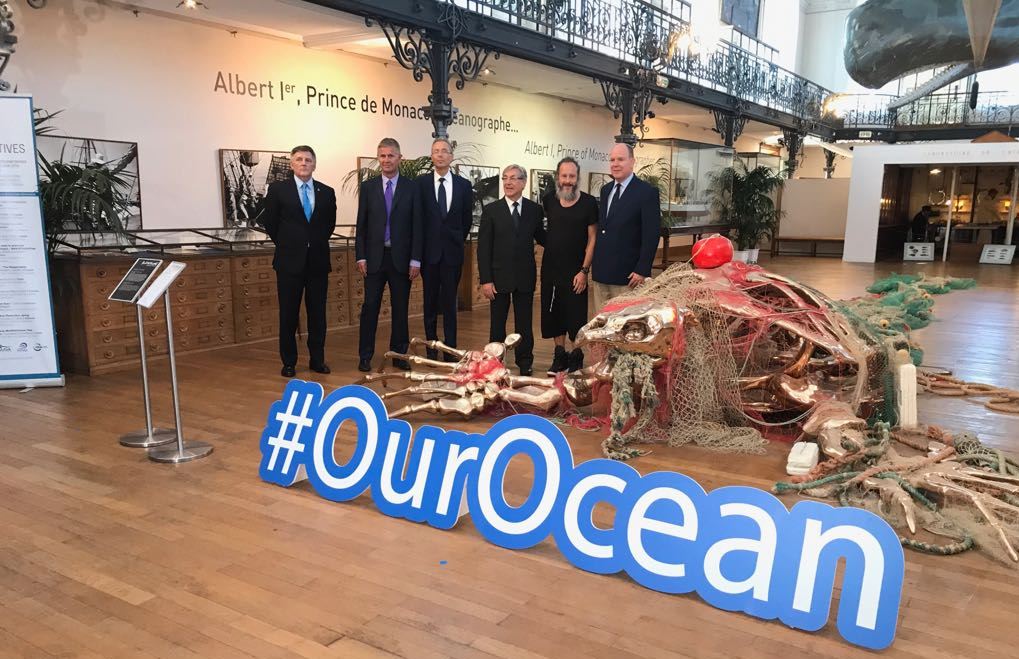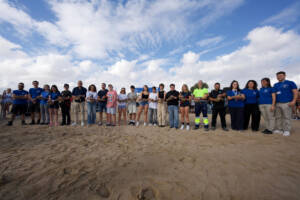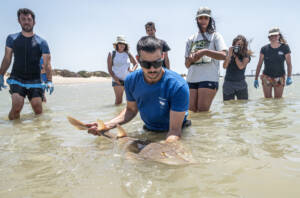The Oceanogràfic collaborates with the global campaign against marine litter
- The European Union joins the UN and presents the initiative «World Aquariums Against Marine Litter» at the Monaco Aquarium, with Prince Albert II as host
- The president of the Oceanogràfic Foundation, Celia Calabuig, attends the launch and signs the support with the European Commissioner Vella
- In 2050, there could be more plastic than fish in the seas, and 99% of seabirds could have ingested plastic
Valencia, July 28, 2017
The European Commissioner for the Environment, Maritime Affairs and Fisheries, Karmenu Vella, yesterday launched the campaign «World Aquariums Against Marine Litter», which will encourage centers around the world to exhibit an exhibition with plastic and disseminate the serious global reality of marine litter. The Oceanogràfic Foundation of Valencia has collaborated with the dissemination of the campaign throughout the world and will participate actively.
Commissioner Vella said in Monaco, with Prince Albert II as host, that «aquariums are a television screen for the ocean. This campaign is urgent and welcome. The World Aquariums have decided to transform themselves into the “breaking news” to avoid becoming their history channel.»
Vella added that «this summer, millions of people around the world will visit aquariums and to demonstrate the change, we must show them the reality of plastic pollution.»
The presentation of the campaign, which took place in the iconic Oceanographic Museum of Monaco, was also attended by the executive director of the UN Environment Program, Erik Solheim, the executive director of the World Association of Zoos and Aquariums (WAZA), Doug Cress, and also, among other representatives of the aquariums, Celia Calabuig, president of the Oceanogràfic Foundation and Avanqua, belonging to Global Omnium, manager of the Oceanogràfic of Valencia.
The campaign is designed to publicize and discuss it at the upcoming “Our Ocean” conference (Malta, October 5-6), in which the member of the scientific committee of the Oceanogràfic Foundation, Juan Antonio Romero, will participate. The meeting, organized by the European Union for the first time, will have an international scope and a high level of representatives.

A pressing planetary problem
Ten million tons of garbage end up in the oceans every year, which is equivalent to one garbage truck per minute, 400 kilos per second. Millions of marine animals die each year due to marine litter, including seabirds, seals, whales, dolphins and turtles. In some areas, microplastics already outnumber plankton by six to one, and the outlook for the future looks bleak: in 2050, there could be more plastic than fish in the seas, and 99% of seabirds could have ingested plastic.
Almost one hundred aquariums on all continents have joined the campaign, organized by the EU as part of the United Nations #CleanSeas campaign.
Oceanogràfic Initiatives
The Oceanogràfic of Valencia has already begun to disseminate and raise awareness about the serious problem of garbage in the oceans with different actions, among which is a meeting of professional documentary filmmakers from around the world, with the founder of Plastic Oceans, Jo Raxton, who presented the film “A plastic ocean” for the first time in Spain, which denounces the serious current situation.
In addition, in the Valencian aquarium, around the great Jellyfish exhibition, jellyfish made of plastic are exhibited to warn that in the future it is possible that only these animals can exist in plastic reproductions and Paco Roca’s mural reflects the negative evolution of the seabed. Also, last year, at Feria Valencia, the center developed an allegorical “performance” of the beaches dirtied with inorganic remains compared to others with organic remains.
Likewise, in the last festivity of the Hogueras de San Juan, the Oceanogràfic warned the public about the danger of throwing garbage on the Valencian coast during those massive parties and the very long time it takes for its disintegration with the addition of the generation of microplastics.




